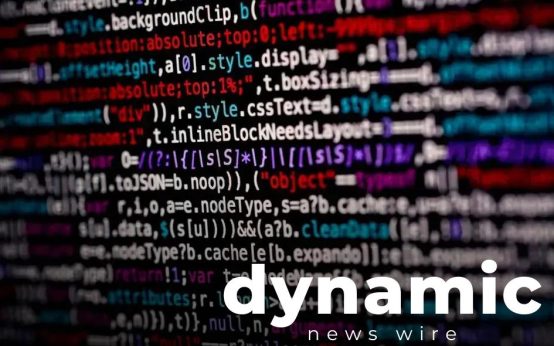Generative AI is taking the world by storm, especially in content creation. This technology is changing the way businesses and creators produce engaging content effortlessly. From automating mundane tasks to enhancing creativity, generative AI is paving the path for a new content era. Let’s explore how this transformative technology impacts content creation through key areas.
Understanding Generative AI: Basics and Benefits
Generative AI, or GA, refers to systems that can generate content similar to how humans create. At its core, GA uses deep learning models to understand patterns and structures in existing data, enabling it to produce new, coherent outputs. These models, often referred to as neural networks, mimic the brain’s interconnected nodes, processing data and generating predictions or outputs.
Initially, the introduction to generative AI might seem complex, but the fundamental idea is quite intuitive. Imagine teaching an AI model by feeding it numerous examples of written articles. Over time, the model discerns patterns in tone, style, and structure, learning to produce content that mirrors those characteristics.
Benefits
One primary benefit of GA is its potential to transform content creation. It can generate text, images, and even music, relieving the burden on humans for repetitive tasks. This means companies can produce personalized content at scale, enhancing customer engagement and satisfaction.
Versatility and Efficiency are pivotal features of generative AI. Beyond text, it can create highly detailed images or simulate real-world scenarios without physical trials. For example, in marketing, GA can produce dynamic advertisements tailored to users’ preferences, driving engagement and conversion.
Innovation in Industries such as entertainment and healthcare showcase GA’s influence. In entertainment, it is used to create scripts or video content, often impossible to differentiate from those crafted by humans. Meanwhile, healthcare benefits from AI-generated predictions and personalized treatment plans by analyzing vast medical datasets.
Lastly, one of the most significant advantages is cost reduction. By automating content production, companies can reduce labor expenses while maintaining high-quality output.
Understanding the basic principles of generative AI and its myriad benefits provides insight into why this technology is pivotal in modern content creation, reshaping how industries approach storytelling and information dissemination.
How Generative AI is Revolutionizing Content

Generative AI technologies are reshaping the way content is created, making the process more efficient and innovative. AI-driven tools can now produce articles, multimedia content, and even scripts, leveraging vast amounts of data to generate high-quality material. This automation of content creation means that brands and publishers can scale their production efforts significantly, ensuring fresh material is always available to engage audiences.
The ability of generative AI to understand and mimic human writing style is one of its standout features. Using sophisticated algorithms, AI can adapt tone, style, and nuances that suit various contexts and audiences, providing personalized content experiences at scale. Furthermore, these systems are adept at learning and improving over time, allowing for the continuous enhancement of content quality.
Another revolutionary aspect is the speed at which content can be produced. What once took hours or days can now be accomplished in minutes with accuracy and consistency that meets industry standards. This increased agility enables companies to respond quickly to trends and news, staying relevant in fast-paced markets.
Generative AI also enhances creativity by suggesting new ideas and formats that creators may not have considered. This capability broadens the horizon for original content production, encouraging innovation and experimentation in fields ranging from marketing and journalism to film and music.
Overall, by leveraging generative AI, content creators can maximize their output without sacrificing quality, while simultaneously exploring new creative potentials. It’s an exciting time for content creation, as AI continues to break boundaries and push the industry forward in unexpected and transformative ways.
Challenges and Considerations in AI Content
When integrating AI into content creation, several challenges and considerations arise. Initially, it’s crucial to address the accuracy of AI-generated content. Machines can produce text that sounds impressive, but verifying the authenticity and factual correctness remains a human responsibility.
Another challenge is the ethical use of AI. As AI technologies advance, there’s a need to ensure that content generated does not perpetuate bias or spread misinformation. This requires monitoring and adjusting algorithms to prevent unintended consequences.
Creativity and personality in writing can be difficult for AI to replicate. While generative AI can generate large volumes of content efficiently, it sometimes lacks the personal touch and creativity that humans bring. This poses the question of balancing AI efficiency with human creativity in content production.
The consideration of job displacement cannot be overlooked. As AI takes over more content creation tasks, there’s a concern for those employed in creative fields. Organizations must consider retraining opportunities and new roles for affected workers to ensure a smooth transition.
Finally, the question of intellectual property arises. Determining who owns the content generated by AI and how it’s attributed can be complex. Organizations need to establish clear guidelines and policies to navigate these waters.
Practical Applications in Various Industries

Generative AI is transforming numerous industries by optimizing workflows and enhancing creativity. In healthcare, AI-powered tools generate detailed medical reports and assist in radiology with improved image analysis. The automotive sector benefits from AI in designing and simulating vehicle parts, leading to more efficient production. In the entertainment industry, AI is revolutionizing game development by generating realistic scenarios and characters, providing an immersive experience. For the fashion industry, AI designs new fabric patterns and predicts trends, catering to consumer preferences swiftly.
Moreover, in finance, AI algorithms are employed for fraud detection by recognizing unusual patterns and generating forecasts that aid decision-making. The education sector leverages AI to create personalized learning experiences and dynamic content, adapting to individual learning paces. In marketing, AI crafts targeted advertisements by analyzing consumer behavior and preferences, which enhances campaign effectiveness.
These practical applications highlight the versatility of generative AI in driving innovation and efficiency across various fields, transforming the way industries operate with advanced AI solutions.
The Future of AI in Content Creation
Artificial intelligence is not just a buzzword in today’s content landscape; it’s a driving force that is reshaping how we think about content creation. The advent of Generative AI marks a new era in the field, offering innovative tools that enhance creativity and efficiency.
As technology progresses, AI models like GPT and DALL-E are increasingly capable of mimicking human creativity. These systems can independently generate articles, images, and even musical compositions. Such capabilities open new avenues for creators, allowing them to amplify their productivity without sacrificing quality. Moreover, AI assists in content personalization, enabling brands to deliver tailored experiences to their audiences effectively.
Despite the exciting prospects, the ethical considerations associated with AI-generated content remain a significant discussion point. Ensuring transparency and addressing biases within AI models are crucial for responsible usage. Moreover, there is a growing need for regulations to govern AI’s role in content creation, ensuring it serves as a tool for empowerment rather than manipulation.
Looking ahead, the integration of AI in content creation processes will likely become more seamless. The future might bring more sophisticated algorithms that understand nuanced human emotions and context, further aligning AI outputs with human expectations. As these technologies advance, they hold the potential to redefine entire industries, from publishing to advertising.


 Understanding Zero Trust Security Models: A Beginner’s Guide
Understanding Zero Trust Security Models: A Beginner’s Guide  Best Practices to Protect Your Data Online: Essential Tips
Best Practices to Protect Your Data Online: Essential Tips  AI vs. Human Creativity: The Future of Work Explored
AI vs. Human Creativity: The Future of Work Explored